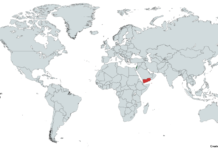Last month and this month the United States experienced extreme heat waves that have shattered temperature records across various regions. These scorching heat waves significantly impacted human lives, agriculture, and the environment.
The global temperature rise and the intensification of extreme weather events are largely attributed to human-induced climate change. The greenhouse gas emissions from human activities have led to a warming Earth and, consequently, more frequent and intense heat waves. Experts warn that these extreme temperatures and their associated impacts will likely worsen if urgent climate action is not taken.
June was marked by extraordinary heat, registering a global average temperature of 61.79 degrees (16.55 degrees Celsius). This temperature surpassed the 20th Century average by a significant 1.89 degrees (1.05 degrees Celsius). This was the first time in recorded history that a summer month exceeded one degree Celsius above the norm. The increase of nearly a quarter of a degree (0.13 degrees Celsius) from the previous record was a striking indication of the planet’s warming trend.
The extreme heatwave this month has affected the Northern Hemisphere, that is, the Southwest of the United States and Mexico, China, and Southern Europe. Death Valley in the US and Northwest China experienced temperatures surpassing 122 degrees Fahrenheit on July 16th, highlighting the severity of the heatwave. In China, many weather stations also reported record-breaking temperatures, and Sanbao broke the All-China heat record.
Catalunya experienced its hottest-ever day in Europe, while other parts of Spain recorded the highest daily minimum temperatures. Meanwhile, regions like Nevada, New Mexico, and Colorado tied the high temperatures in the US. In Arizona, the Cayman Islands, and Phoenix, Arizona, record-breaking night-time temperatures were recorded, and Phoenix also set a record for the longest time without going below 90 degrees Fahrenheit/32.2 degrees Celcius.
The extreme heat waves this month have resulted in several heat-related deaths in the United States, including migrants on the Mexican-US border. Mexico reported over 200 heat-related fatalities, while other countries like Spain, Italy, Cyprus, Algeria, Greece, and China also experienced heat-related deaths and increased hospitalizations due to illnesses that are heat-related. Large parts of Italy, Spain, and the Southern US were under heat alerts, which led to increased demand for power and adversely affected crucial crops such as cotton in China and olive oil in Spain.
World Weather Attribution scientists collaborated to know to what extent activities by humans have induced climate change and influenced the likelihood of the extreme July heat waves in the US, Europe, and China. They used peer-reviewed methods to analyze temperature data over specific regions during the most affected periods.
The temperature records for last month and this month created an urgent need to address climate change. Rising global temperatures, heat waves, and their devastating consequences underscore the importance of adopting sustainable practices and reducing greenhouse gas emissions. Governments, industries, and individuals must come together to mitigate climate change and build resilience to future extreme weather events.









